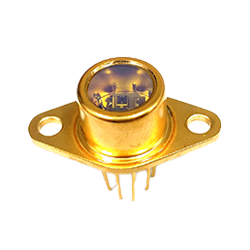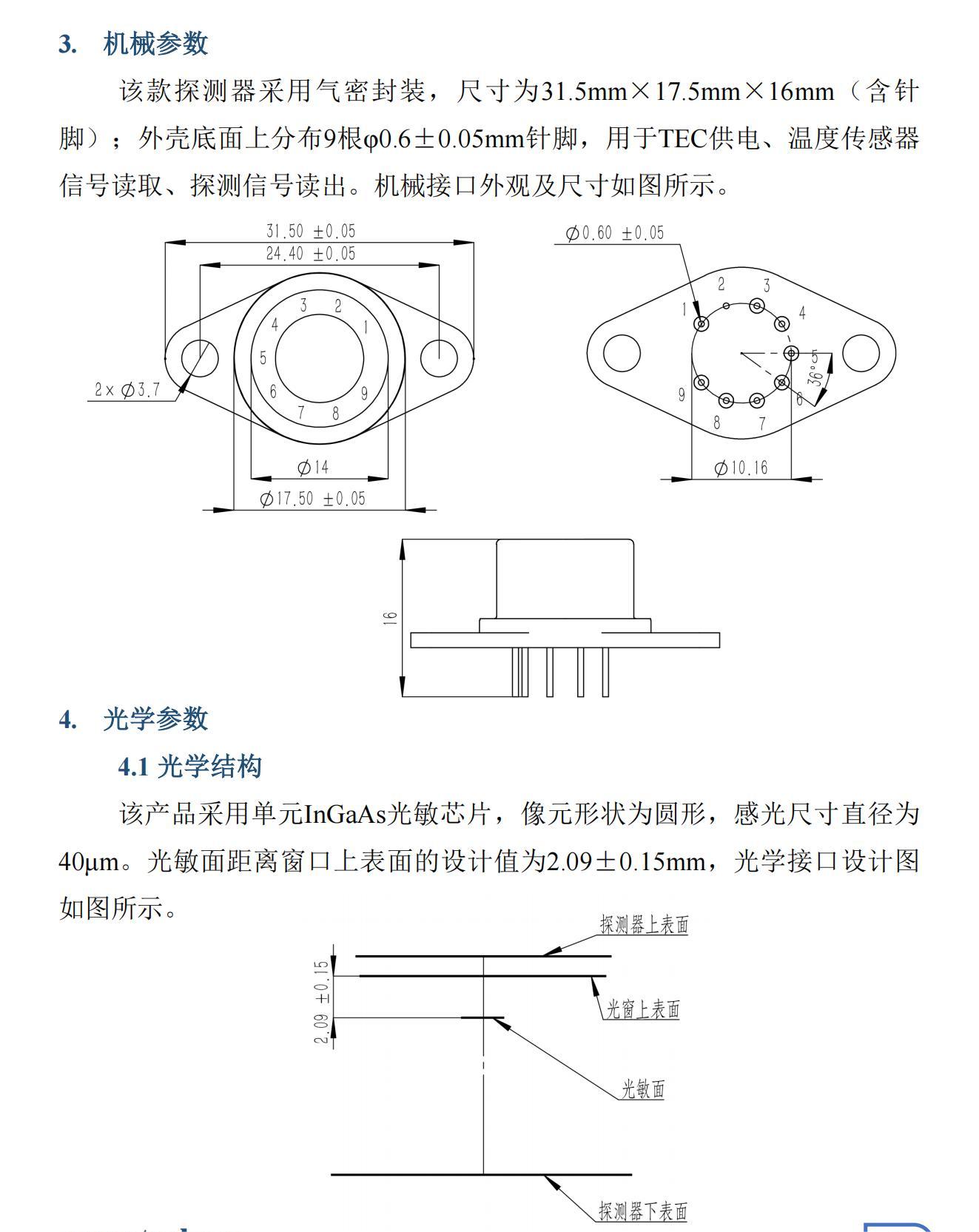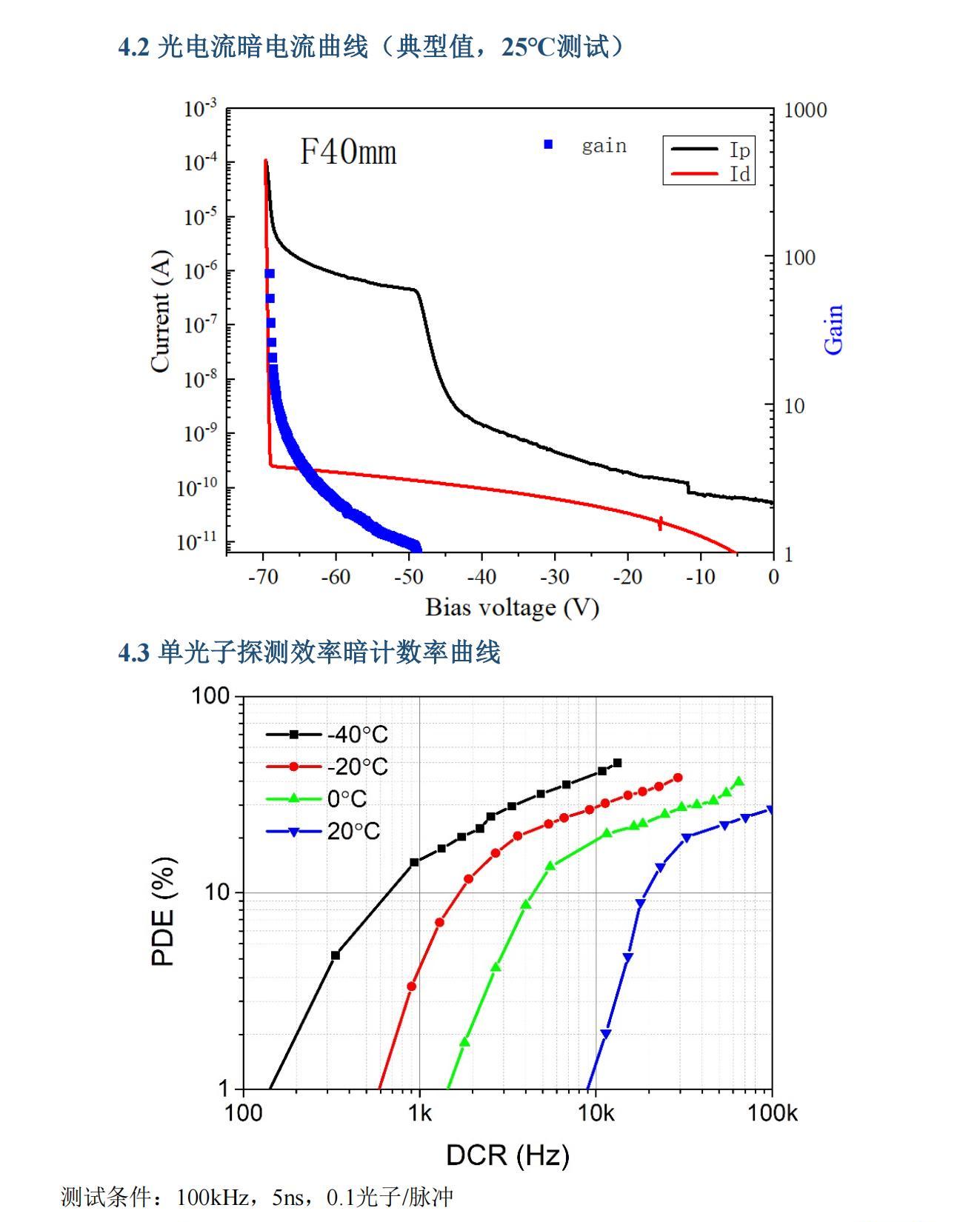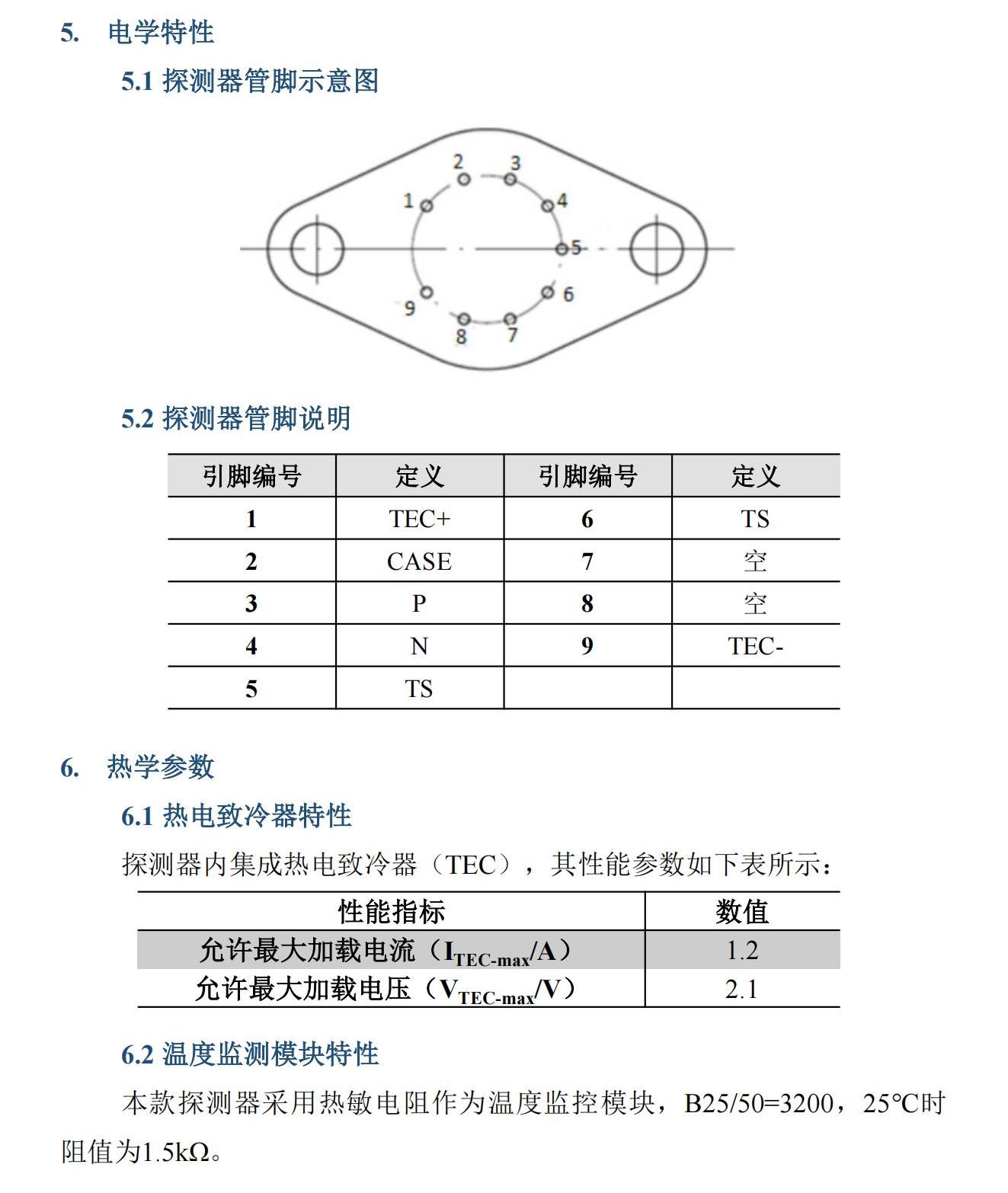The TH1640-TO66 single photon avalanche detector is mainly composed of InGaAsP/InP APD chips and a two-stage thermoelectric cooler (TEC). It adopts the TO66 packaging form and can be used in fields such as LiDAR, ranging, weak light detection, and high-speed laser communication. This user manual only provides instructions for this product.
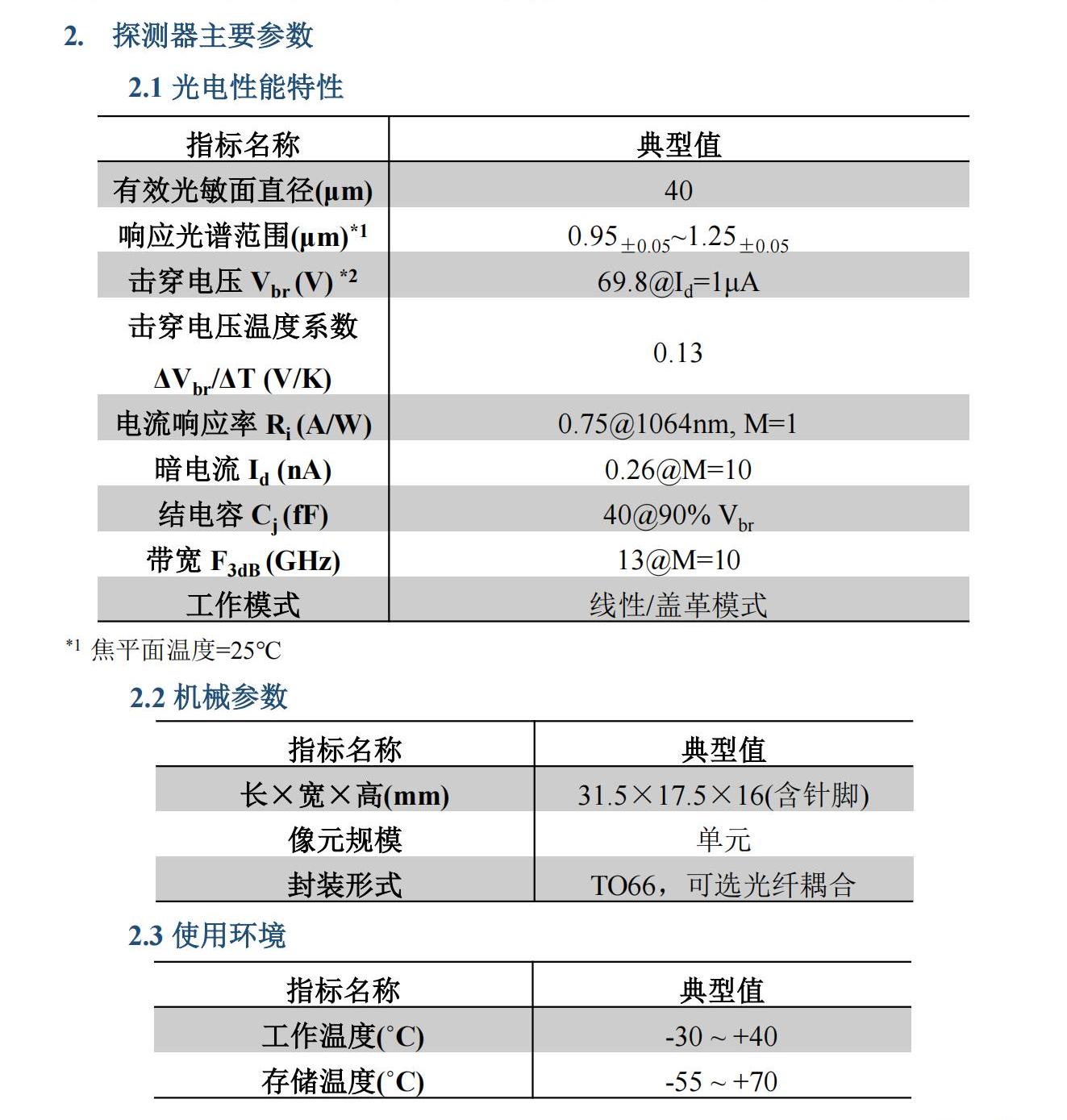
Notes:
a) During the installation process of TEC, attention should be paid to the addition of new resistors introduced by the external electrical structure. If the added resistance exceeds 10% of the TEC resistance, the I-V curve needs to be recalibrated;
b) It is recommended to connect the TEC with a smaller resistance. If welding is required, short-circuit grounding protection is required. The welding temperature should be ≤ 250 ℃ and the welding time should be<10s;
c) If higher measurement accuracy is required within a small temperature range, the B value can be calculated according to the requirements;
d) Before starting TEC, it is necessary to confirm that the temperature monitoring module is working properly, the heat dissipation surface is in full contact with the radiator, the heat dissipation surface is not less than the required size area, and the radiator is working normally. TEC must not be started without the radiator installed or the radiator is not working;
e) When starting TEC for the first time, gradually load current or voltage from 0A or 0V, while monitoring temperature changes until the preset temperature is reached;
f) Due to the influence of temperature on the performance of the detector, TEC should be turned on until the temperature stabilizes before turning on the detector. It is not recommended for the detector to operate in temperature changing environments;
g) When the detector is not working, the power supply to TEC should be stopped to extend its service life;
h) The cooling and heating effects of the detector are related to the ambient temperature, power supply performance, and heat dissipation status. It is recommended to reasonably match the heat dissipation system according to the user’s own usage environment and the performance requirements of the detector.


